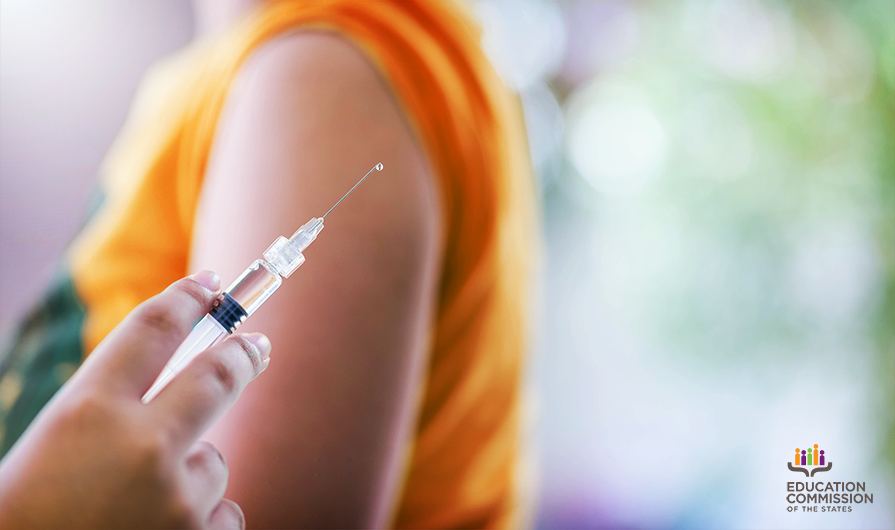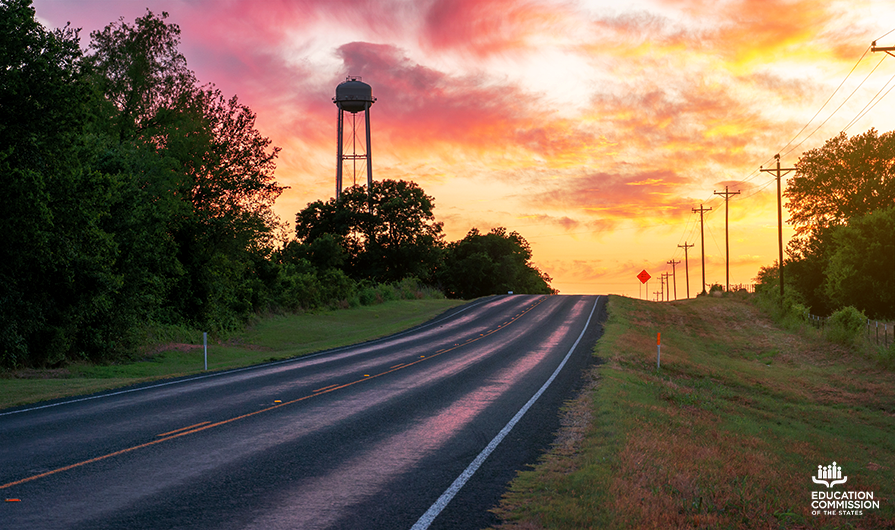In recent years, policy activity and public discourse has focused on religious and philosophical exemptions for mandatory vaccine requirements for school-age children. During the pandemic, the conversation has shifted to declining vaccination rates and the anticipation of a COVID-19 vaccine. States have begun developing guidance and policies to support students in getting routine vaccinations as well as conditions for reopening that are affected by a potential COVID-19 vaccine.
Pre-pandemic, the measles, mumps and rubella (MMR) vaccination rates among kindergarteners across the states varied from 87.4% to 99.2%. The Centers for Disease Control has acknowledged that there is potential for vaccination rates to fall during the pandemic as people react to stay-at-home orders and limitations on doctors’ visits. One study out of Michigan found a 21.5% decline in non-influenza vaccinations for children 18 years of age and younger between January and April 2020. This is reflected in Michigan’s reopening plan, which highlights the importance of routine vaccinations that can protect the overall health of the community, reduce medical visits and limit strain on the health care system.
Other state reopening plans from Colorado, Massachusetts and Pennsylvania include guidance encouraging parents to ensure their children are receiving the standard vaccinations unless exempted by law. North Carolina’s reopening plan encourages schools to collaborate with local health departments on the administration of influenza and other required vaccines.
The District of Columbia’s No Shots, No School policy allows schools to remove students from in-person instruction if they are not up to date on vaccinations and offer them virtual instruction instead. Massachusetts became the first state in the nation to mandate that all students under the age of 30 receive an influenza vaccination by the end of the calendar year, with some exceptions and exemptions. They join six other states that mandate influenza vaccines for all enrollees in child care through Pre-K.
In addition to general concern for reduced routine vaccination rates, at least nine states have included various mentions of a COVID-19 vaccine in their reopening plans for schools. For those states that acknowledge vaccines in their reopening plans, the references to vaccines vary widely.
-
- Alabama proposes amendments to the state attendance manual around virtual learning, excused absences and attendance beyond the classroom to accommodate parents who do not feel safe sending their students to school until a vaccine has been developed.
- Connecticut places restrictions on school bus use until a vaccine or effective treatment for COVID-19 is available. Maryland acknowledges there is a “high level of concern” that school bus drivers and attendants will not be willing to put themselves at risk until there is a vaccine available.
- Delaware highlights the importance of implementing protective measures, including face coverings and distancing until a vaccine or effective treatment is available.
- Idaho, Ohio and Tennessee stress the importance of remote learning options until a vaccine is available or families are comfortable sending their students to school.
- Illinois makes clear that a region may not enter phase five until there is a COVID-19 vaccine, a readily available treatment option or no new cases over time.
- Wisconsin recommends that K-12 schools develop reopening plans under the assumption that COVID-19 will “remain in circulation until a vaccine is developed and widely used.”
Though not in the state reopening plan, the Virginia Legislature considered, and voted down, several pieces of legislation that would have limited a potential mandate and exemptions for the COVID-19 vaccine.
As states consider conditions for reopening, student health will be a central component of the process. Uncertainty about declining MMR vaccination rates and access to a COVID-19 vaccine further complicate these considerations. The CDC, along with other federal members of President Trump’s Operation Warp Speed, are developing a COVID-19 vaccination program to address allocation and access to a COVID-19 vaccine. By using vaccination data and other public health resources, states can gain a sense of their current MMR vaccination rates and create a path for students to reenter schools safely.















